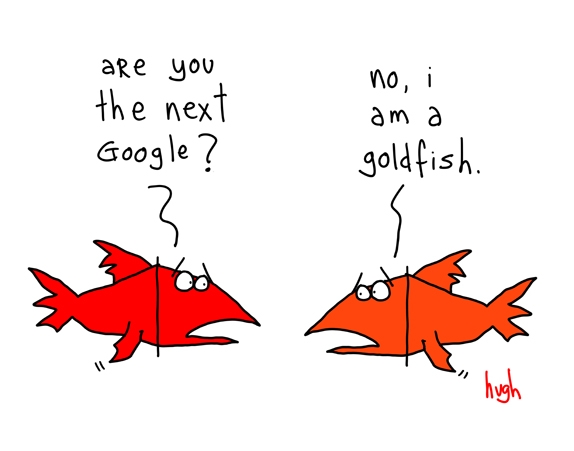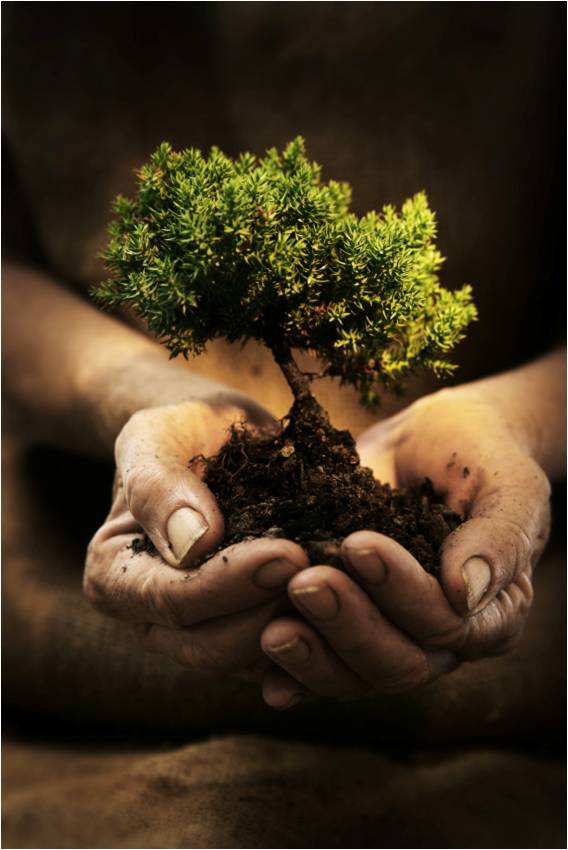Truths, Trends and Trifles in Business Education - A Hacker's Guide
 One of the most important issues we are currently facing as business educators, and certainly in the field of executive education is the ability to separate out the truths from the trends and the trends from the trifles. I am indebted to my partner, Dave Duarte for this elegant distinction between these three lenses. It is well worth reading his blog post on this as it relates to the problematics of Social Media strategies.
Truths
One of the most important issues we are currently facing as business educators, and certainly in the field of executive education is the ability to separate out the truths from the trends and the trends from the trifles. I am indebted to my partner, Dave Duarte for this elegant distinction between these three lenses. It is well worth reading his blog post on this as it relates to the problematics of Social Media strategies.
Truths
 The truth of what it is that you do will have an element which is unchanging. What is is in the nature of your work that is fixed and utterly aligned to your purpose? In my work it is the understanding that for leaders to have impact they need different practices - the ability to manage their energy and attention, working with questions rather than answers, seeing themselves as coaches and resources rather than controllers. This is the "why" of the work that I do. It is useful to spend an inordinate amount of time to really get to the nub of your why. In going slow to go fast here you really do create a landscape that you can align emergent trends around.Another way of articulating the "why" is perhaps around the idea of Purpose.
The truth of what it is that you do will have an element which is unchanging. What is is in the nature of your work that is fixed and utterly aligned to your purpose? In my work it is the understanding that for leaders to have impact they need different practices - the ability to manage their energy and attention, working with questions rather than answers, seeing themselves as coaches and resources rather than controllers. This is the "why" of the work that I do. It is useful to spend an inordinate amount of time to really get to the nub of your why. In going slow to go fast here you really do create a landscape that you can align emergent trends around.Another way of articulating the "why" is perhaps around the idea of Purpose.
Trends
Trends, on the other hand, are what are appearing on your horizon that are creating shifts in behaviour and will impact on the work you do. Trends are the "What". A trend is something which you can choose to see and align to your Why. Not every trend will be meaningful to the work that you do but if you can pick two or three things that have impact these are the ones to spend time on crafting alignment and responses. In my world, the trends that impact on what I do are the drive for responsible leadership, the attention economy, information overload, learning on demand, and the upsurgence of collaborative technologies. Understanding the importance of these trends allows me to craft responses that may well be meaningful in my search to help leaders bild practices that help them achieve greater impact - like using Curiosity as a lens to filter the quality of our attention, building a model around Productive Presencing which helps us manage our attention and energy at work, constructing an attention audit to help engage with negative voices in our heads and agility as a leader's toolkit for building practises that help us change course mid direction and encourage the perspectives of others in our decision making. Trends generally have upwards of a 15 year lifespan which means that their impact is significant.
Trifles on the other hand are those fabulously sexy tools which are here today, gone tomorrow. Like Zite, or Foursquare, Ning, Facebook or Twitter. They are the "How" of what it is we do - applications which we can use expediently to get our message across but which we can equally abandon for another platform which might serve us better at a later stage. One of the issues with the age we live in is that we are just too busy to make these distinctions and often risk pouring an enormous amount of energy and capital into trifles rather than the alignment of particular trends with our truths. Overinvesting in a trifle hurts your business and erodes your truth. Often the mistake trendforecasters make is to focus on the trifles whihc three years down the line are gone.
It is my hope that these three lenses will serve you well in your own decisionmaking around what to track and what to use. As a hack, it is really just about remembering what is the Why (Truths), what is your What (Trends) and what is your How (Trifles). In an information-rich world this might well be an important filter.
Happy hacking.
A talk to be given tomorrow at the EFMD Annual Conference in Brussels, Belgium.
The Art of Noticing
Noticing is a skill which is seen as central to creative literacy. Could it also be that it is a practice which is critical to business success? I think that it is. The problem though with the rate of change happening faster than our ability to respond to it is that many of us just seem to want knuckle down and get on with it, using the well worn filters and models which worked in the past and pray they serve us well in the future. The challenge is that we are living in a world where "time sickness" (the belief that there is not enought time and that it running out for us) is a real anxiety generator and thus any extra time required to practice a way of seeing things differently is viewed by many as just too overwhelming. In an informal poll done with delegates on our executive education courses at UCT GSB, many stated that they were working longer hours, taking shorter breaks and multi tasking just to try and keep up with the sheer volume of information they were confronted with daily. As many of you will know, I am working on the notion of Curiosity as an enabler of learning and as a filter for our attention. But what of the art of noticing? What has become clear for me is that conscious noticing is not easy. It requires energy and practise. In it's own right, noticing is an act of attention. Noticing, like Curiosity, is an appreciating asset. What I am particularly interested in is the way in which how we notice things differently will start informing our own leadership practices.
It is my belief that other discplines often provide extraordinary insight for crafting and understanding questions we might not have fully birthed. In the current world of augmented reality, designers craft avatars and characters that live not in the full focus of one’s vision but to the side – at a glance (Slavin, 2009; Cerveny, 2009). This can be much more efficient than fully parallel approaches to pattern recognition. The art of the glance is a useful exercise to practice when attempting to notice things outside of one’s normal area of perception. In fact, according to Schmidhuber (1991), humans and other biological systems use sequential gaze shifts to detect and also recognise patterns. This peripheral vision gives rise to residual objects which exist alongside of us but which are seldom noticed. Simply put, what are you noticing from the corner of your eye that you would usually filter out, but could possibly give opportunities for seeing differently? How can this way of seeing improve your capacity as a leader - when so much of the literature tells us to have a clear and uninterrupted focus.
I don't have the answers to these questions but I am priviliged to be working with Dave Bond, who is the Director of the Leadership Centre at Ashridge Business School in the UK on a new three day programme entitled The Art of Noticing - Fresh Eyes for New Opportunities which will be run in October at the GSB and explore some of these challenges.
I am genuinely excited by the possibilities this can generate for more effective leadership and the opportunities it can help us as leaders generate in our own businesses and practices.
How Does Web 2.0 Affect the Way we Grow Leaders?
I have decided to continue using my blog as a space to share thoughts around my PhD topic on the Collision between Web 2.0/3? and Leadership Development in organisations. We have created a blog for the ongoing Business Acumen for Artists programme at http://gsbexecedblog.uct.ac.za/baa/ So those wanting to enrich their own artistic journey through a deeper undestanding of business acumen need just go there for updates and insights. It is a wonderfully engaging group of artists we have this year and I'm sure they won't mind you popping in and posting your own stumbling blocks and/or insights and questions. My blog is going to be solely around the question posed in the title.
I have decided to change my topic which was previously on Ecovation for a number of reasons...none of which I want to go into now. But I think this collision is one which is a good fit because leadership development is the area I work in and design programmes around, I am increasingly involved in open source and I see the visible changes that mass collaboration is effecting on senior leaders in organisations. So deep breath - into the wild...
Any leftfield Jack London commentary to start me on my journey?


